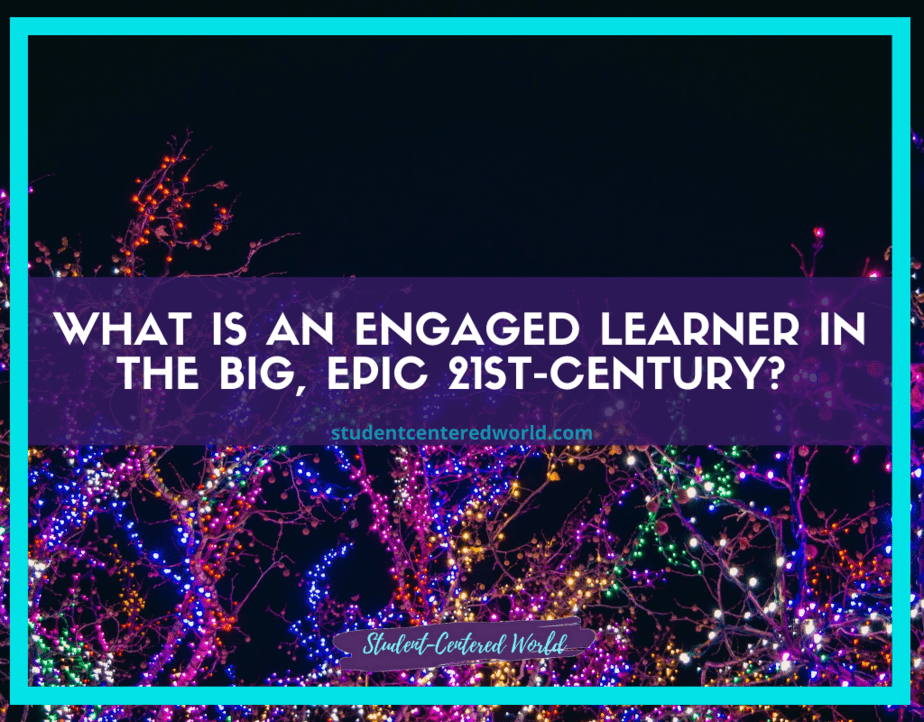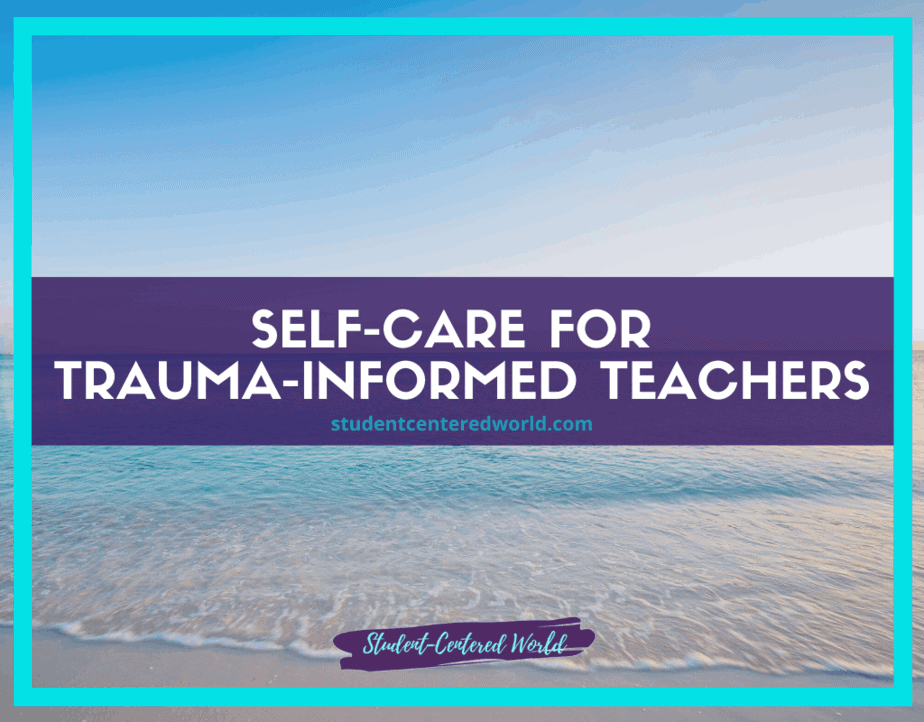Student-Centered Blended Learning Ease and 21st Century Grit
One of my biggest concerns coming off of the 2020-2021 school year is that the term “blended learning” was going to turn into a dirty word. While many schools were using the term to describe their hybrid environment in their classrooms (some kids virtual, some in the class, a whole lot of headaches), that isn’t what blended learning truly is. To understand how blended learning is *actually* supposed to work, you can check out this in-depth article here. I truly feel that student-centered blended learning has a place in every classroom and don’t want teachers to shy away from the experience based on what we went through during crisis learning.
As a matter of fact, I had turned my classroom into a student-centered blended learning environment after I taught a high school elective that was fully hybrid by design. Once I saw how well that course was working, I decided to morph my other classes into that model, and wow, what a difference with engagement, participation, achievement, and my own stress levels.
I’m here to talk about what blended learning really means, dispel some myths about it, and make sure that you’re using your tech tools the right way. I’m a big advocate of the other student-centered approaches out there as well, but blended learning is one that really stands up to scrutiny.

Considerations when implementing
There are 5 key pieces to consider when starting a student-centered blended learning program:
1) Choice: More is better! No matter what school setting you’re in, if your students can choose their own path for a class, they’re going to be more engaged and invested in what they’re learning. Blended learning enforces choice on your students for any of their classes; this includes the type and length of class, as well as the materials used during it. Some schools have even taken this to heart by allowing students to choose when and where they want to learn, which brings me to lesson two.
2) Location: Flexibility is key! Your students should be given the freedom to complete their classwork wherever they can. If they’re having a hard time focusing in class, you don’t want them missing out on the valuable information you’re trying to teach. Having the option of taking their learning on the go is a great way to keep them engaged even if they don’t have access to all the equipment at school or back home.
3) Ownership: Your students are more likely to stay focused and invest time into the classwork that they feel like they own. One of the main benefits of blended learning is that your students write their own narrative and drive their own pace in the class. They’re not just following along to what you want them to learn; they have a vested interest in making sure that they complete their assignments in the time frame that works for them (and without cheating, of course). This is a great way to keep your students self-directed and engaged.
4) Modality: Your class content should be delivered in many media formats to maximize engagement from your students. Depending on what you’re teaching, videos, articles, images, audio recordings, or eBooks are all valuable and engaging ways to deliver the material. Facilitating a class in this way allows you to customize what content your students consume based on their strengths as well.
5) Scaffolding: As you know, blended learning is a great tool for using technology during class, but it also provides opportunities for other tools that aren’t tech-based. If you’re teaching a class on writing skills, providing your students with the opportunity to use graphic organizers and outlines helps them put their thoughts together before they sit down to write. For mathematics classes, giving your students algebra tiles to play around with during class can help them solve difficult problems in a different way than just doing it in their head.
The possibilities are endless, but it all centers around the idea that you’re trying to make your class more engaging and fun for your students so that they learn more by doing less work.
Student-centered blended learning is an important learning experience that students should be able to have. However, it takes a village to make blended learning work correctly, and schools need to make sure that they have the critical elements in place first before trying out something like this with their students.
The elements of student-centered blended learning are not difficult to implement, they’re just different. As with any new experience, it’s important to go into this with eyes wide open. You also need to be prepared for a lot of road bumps along the way. The key is to take each one of those challenges and use them as an opportunity to learn as much from the process as your students do.

Setting yourself up for success
Go through these five steps before you implement student-centered blended learning, and you’re sure to be successful.
1) Identify your school’s culture: Before you do anything else, it’s important that you understand how the stakeholders feel about blended learning as a concept. Whether you’re trying this with your students or on your own, it’s important that there is buy-in from the stakeholders in order for it to be a success (which might be 3/4 of the battle when you get started). This will translate into increased student engagement as well and shouldn’t be underestimated.
2) Understand the goal of blended learning: Another important step is to determine what the *real* purpose of implementing student-centered blended learning is. It’s all too easy for us as teachers to want to implement this just because it’s “cool,” but that’s not a valid excuse. Only you know why you’re trying blended learning out in the first place, and it’s important that you keep focused on that goal no matter how things go.
3) Create a learning-focused culture: The third step will be to make sure you have the right people on board with your blended learning environment. I don’t mean just students here either; every stakeholder in your school needs to be on the same page and must have buy-in. Don’t expect to go rogue with this idea without anybody noticing either. It’s important that you bring in your administrators and get their blessing before you even start, even if it’s just running the idea past them. Make sure you have your own data to back it up; it’s hard to argue against the evidence.
4) Have the right equipment: Most of this process will be focused on implementation, but it’s important to remember that allowing students to work in a blended learning environment means having access to the equipment that will allow them to do so. This can range from monitoring software for virtual classes to simply having enough computers for students to have access at all times (and this doesn’t have to be school assigned; survey your students to find out what tech they have available to them and plan accordingly).
5) Make sure the program can sustain growth: This is something I feel strongly about. If you’re just trying this out for the first time, that’s great! Just don’t stop there because your mind is made up about what blended learning is. It takes time to implement full scale with 100% buy-in. Try it out on a small scale first, and then expand from there. This will allow you to tweak the program as needed without running the risk of harming student engagement in your class.

Why it works
Student-Centered blended learning shouldn’t be intimidating; it is a great way to keep your students engaged, on the same page, and propelling their growth. Just take a methodical approach and be prepared to adjust as needed. Make sure you have the buy-in of all your stakeholders and don’t be afraid to start small. You’ll be successful if you do.
Again, to learn what true blended learning is, make sure you read the article here that explains it, in detail, from start to finish.
Student-centered blended learning has been a topic that’s received a lot of attention lately, and it seems to be all for the better. It’s great to see more teachers trying this out in their classrooms. Whether you’re just getting started or have been doing blended learning before it was trendy, it never hurts to review some key points to ensure that what you’re doing is really blended learning and not just a mix of tech tools.
If all these steps seem overwhelming, don’t worry because there are plenty of other great resources out there to help you make the best use of student-centered blended learning for your students.
Stop Driving the Teacher Struggle Bus
Are you struggling with student engagement, apathy, or keeping your class on track?
💫💫 There’s hope! 💫💫
Join my free teacher workshop “Choosing Choice” and in just 60 minutes, you’ll craft a practical plan to revitalize your teaching. Discover the magic of student choice in boosting engagement, gain quick implementation ideas, and explore strategies for year-long success.
Unlike overwhelming workshops, my approach guides you in real-time, providing more classroom options, reducing stress, and giving you more personal time.
Plus, you’ll earn a 1-hour professional development certificate and have 7 days of access.
Don’t miss this chance to transform your teaching; click below to secure your spot now!






